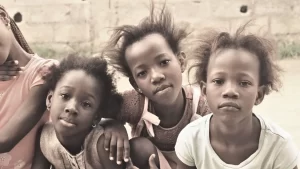How to Address Age-Out Issues in Family Immigration

Family immigration is a complex area of U.S. immigration law, especially when it involves children who may “age out” before their application for permanent residence is processed. The term age out refers to a child turning 21 years old, which can result in the loss of eligibility for certain immigration benefits under the family-based visa category. This issue is an irritating concern for many families, as processing delays and bureaucratic hurdles can push children over this critical age threshold. The Child Status Protection Act (CSPA) provides some relief, but dealing with these hurdles requires a thorough understanding of the rules, careful planning, and often, professional legal guidance.
Understanding the Child Status Protection Act (CSPA)

The Child Status Protection Act (CSPA) was enacted to address the issue of children aging out during the immigration process. Under U.S. immigration law, a child is defined as an unmarried person under 21 years of age. If a child reaches 21 before their immigration petition is processed, they can lose eligibility for certain benefits. The CSPA aims to protect children from losing their eligibility due to processing delays by allowing them to lock in their age under specific circumstances.
Key Aspects of the CSPA
- Age Calculation: The CSPA allows the calculation of a child’s age in a way that may help them remain eligible for benefits. The CSPA age calculator subtracts the time the immigration petition was pending from the child’s age at the time a visa becomes available. This adjusted age determines if the child is considered under 21.
- Final Action Date vs. Priority Date: The child’s CSPA age is calculated based on the date a visa becomes available, known as the final action date, compared to the petition’s priority date. The priority date is generally when the petition was filed, and the final action date is when the visa number becomes available.
- Protection Scope: The CSPA covers various visa categories, including family-sponsored, employment-based, and humanitarian categories. It also applies to dependents in these categories, helping protect them from aging out due to delays.
Practical Use of CSPA Protections

To effectively use CSPA protections, families must understand and accurately calculate the CSPA age of their children. This process involves:
- Understanding CSPA Rules: Families should familiarize themselves with the CSPA’s new rules and guidelines provided by USCIS. This understanding helps in ensuring that they meet all the criteria for CSPA protection.
- Using Tools and Calculators: Utilizing a CSPA calculator, such as those provided by USCIS, helps in determining the protected age of a child. This tool considers various factors, including the processing time of the petition and the child’s age at the time the visa becomes available.
- Monitoring the Visa Bulletin: The U.S. Department of State’s Visa Bulletin provides monthly updates on visa availability, including the final action dates and priority dates. Monitoring these updates is important for understanding when a visa becomes available and how it affects the child’s CSPA age.
Challenges and Limitations of CSPA

While the CSPA provides considerable protection, it does not cover all scenarios, and there are limitations:
- Exclusion of Certain Categories: Some visa categories, like certain employment-based categories or cases where the petition was filed after the child turned 21, may not be eligible for CSPA protection.
- Complex Calculation Process: The calculation of CSPA age can be complex, especially when considering factors like visa bulletin updates, changes in priority dates, and differences between the date of filing vs. the final action date.
- Legal and Administrative Hurdles: Families often face challenges in dealing with the legal and administrative processes, such as issues with USCIS communication or delays in processing.
Strategies to Address Age-Out Issues

To minimize the risk of aging out, families should adopt several strategies:
- Early Filing: Filing immigration petitions as early as possible can help secure a child’s age under the CSPA. Early filing is particularly important for categories with long processing times, such as family-based visas.
- Regular Monitoring: Families should regularly check the Visa Bulletin and use tools like the green card priority date calculator to stay informed about their case status and potential risks of aging out.
- Legal Assistance: Consulting with an immigration attorney can provide valuable guidance. An attorney can help understand CSPA rules, calculate protected age, and advise on alternative immigration options if aging out is approaching.
- Alternative Options: If a child is at risk of aging out, families may need to explore other visa categories or status adjustments. For example, children on H4 visas might explore transitioning to student visas (F1) or employment-based visas.
Special Considerations for Specific Cases
- H4 Children Aging Out
Children on H4 visas, dependent on H1B visa holders, are particularly vulnerable to aging out. If these children turn 21 before the primary visa holder secures a green card, they can lose their dependent status. The H4 child age out issue is severe, especially given the lengthy processing times for H1B to green card transitions.
- Family-Based Immigration
In family-based immigration, delays can lead to children aging out before they receive their green card. Parents who are U.S. citizens or permanent residents may need to refile petitions under different categories once their children age out. For example, a permanent resident petition for a child over 21 would fall under a different visa category with its processing times and requirements.
- Employment-Based Visas
For employment-based visas, such as EB2 and EB3, understanding the relationship between the EB2 priority dates and the child’s age is important. The priority date definition and the distinction between the final action date vs. the date of filing play critical roles in determining eligibility for CSPA protection.
Tools and Resources

Several tools and resources can help families understand the complexities of age-out issues:
- CSPA Age Calculators: Online calculators can help families estimate the CSPA age of their children, considering factors like the petition filing date and visa availability.
- Visa Bulletin Calculator: This tool helps estimate when a visa might become available, based on current priority dates and historical trends.
- Priority Date Calculators: These calculators help determine how long an applicant must wait for a visa, based on their priority date and the current progress of visa processing.
- Legal Consultations: Engaging with an immigration attorney can provide personalized guidance and support, helping families understand their specific challenges.
Conclusion: Protecting Your Family’s Future
Age-out issues are a painful concern for many families dealing with the U.S. immigration system. However, families can effectively manage these challenges with a thorough understanding of the Child Status Protection Act (CSPA), regular monitoring of visa bulletins, and the use of helpful tools and resources. Proactive planning and legal assistance are key to ensuring that children do not lose their eligibility for immigration benefits due to aging out.
Call to Action:
If you are concerned about your child’s potential to age out, contact our experienced immigration attorneys today. At Passage Law, we specialize in family-based immigration and can help you deal with the complexities of CSPA, priority dates, and visa processing times. Don’t wait—protect your family’s future by understanding your rights and options under U.S. immigration law.
By taking these steps, families can secure their future in the United States, ensuring that children receive access to immigration benefits without running the danger of aging out.
